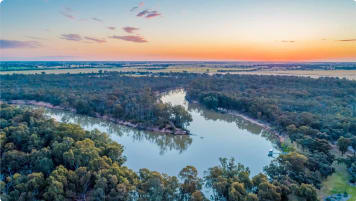Yorke Peninsula, South Australia
Article about Yorke Peninsula, a few hours north of Adelaide. Feature supports Odyssey Traveller, an Antipodean travel company serving World Travellers since 1983 with small group educational tours for senior couples and mature solo travellers. Part of a collection of articles on South Australia, Aboriginal Australia and Australia in general.
27 Jan 22 · 11 mins read

History of Yorke Peninsula
South Australia’s Yorke Peninsula region offers 700 kilometres of spectacular coastal scenery, pristine white beaches, and azure seas, contrasting starkly with the mallee landscape behind. One of South Australia’s most accessible seaside holiday escapes, the leg-shaped peninsula is located just an hour’s drive west from Adelaide, surrounded by Spencer Gulf and Gulf St Vincent.
The traditional owners of Yorke Peninsula are the Narungga, a nomadic people who practiced fire-stick farming, and were admired by European settlers for their facility for fishing and aquaculture. Like the Eyre Peninsula, Yorke was first charted by Flinders and Baudin as they navigated the South Australian coast.
The peninsula is well known for its historic copper mining, its northern end known as the Copper Coast, as well as its fertile soil, producing high yields of grain crops such as barley and wheat. Other key resources from the region are salt, limestone, and gypsum, while the fishing and tourism industries also play a significant part in the economy. The region’s most populous town is Kadina.
This article explores the history and economic development of Yorke Peninsula as background reading for Odyssey Traveller’s 15-day Tour of the Eyre and Yorke Peninsulas. This tour is designed for mature and senior travellers, travelling as a couple or single traveller, to discover the hidden gems of South Australia.
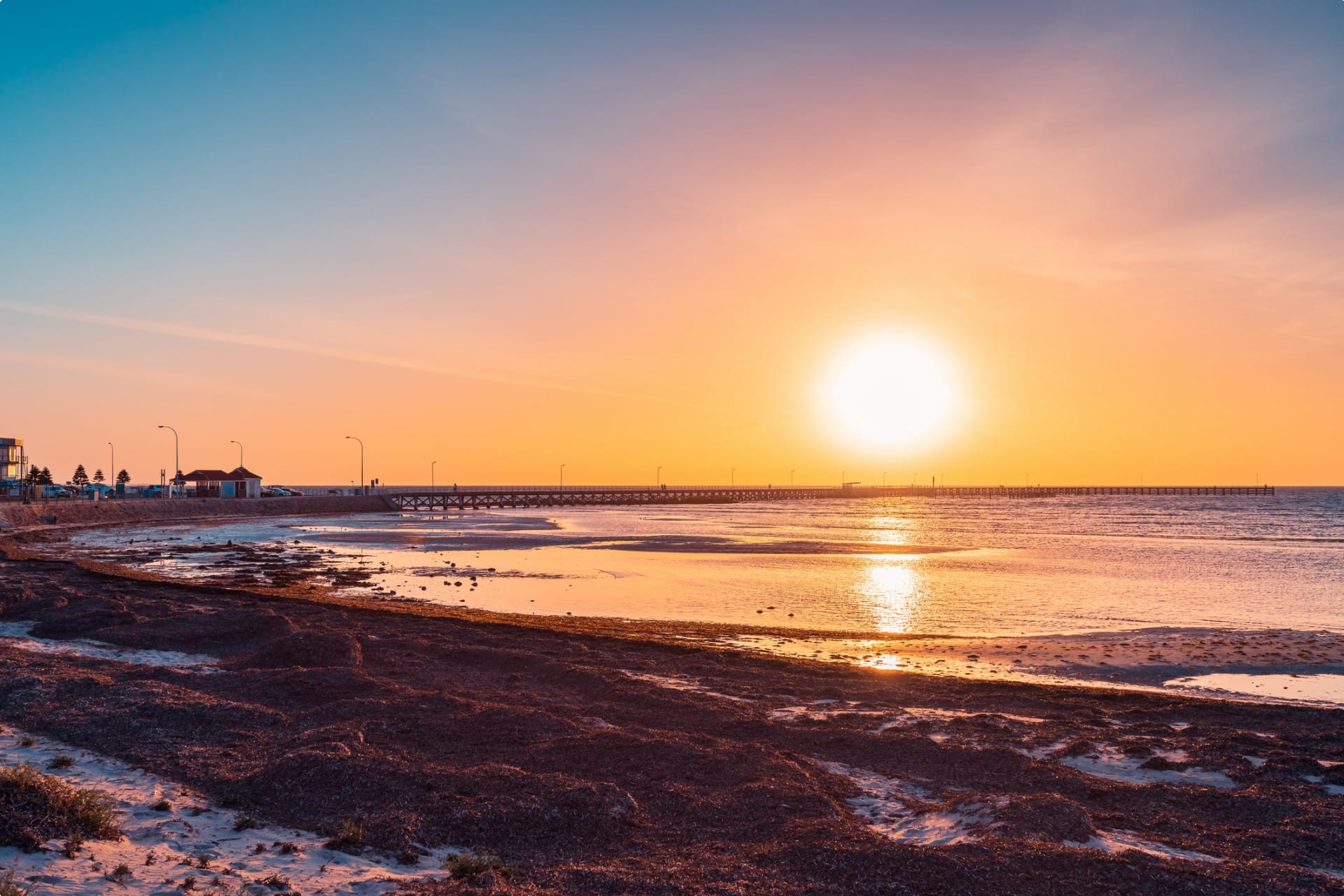
Narungga Aboriginal People
The traditional owners of Yorke Peninsula are the people of the Narungga nation, made up of four clans: the Kurnara in the north of the peninsula, Windera in the east, Wari in the west and Dilpa in the south. For thousands of years before European settlement, the nation occupied country extending from Port Broughton in the north to the Hummock Ranges in the east. Their neighbours were the Kaurna people of the Adelaide Plains and the Nukunu people to the north, with whom the Narungga often met for trade and ceremony.
The Narungga led a peaceful existence, moving among their many campsites, places of abundant fresh water and food. These included camps at Moonta Bay, Tiddy Widdy beach, Point Pearce, Point Yorke and many more. Here, they lived off plants, such as roots, seeds, and a huge variety of fruit, while hunting kangaroos, emus, possums, bandicoots, lizards, wombats, bettongs, and other animals.
They were also skilful fishers, with butterfish, salmon, mullet, and snapper making up a large part of their diet. Shellfish were also an important part, with people collecting periwinkles and warreners from the reefs at low tide or diving into deeper water for abalone. Crabs and crayfish were also occasionally collected.
The Narungga actively managed and preserved their lands. Fires were used to clear old grasses and promote fresh growth of vegetation. Fresh waterholes were covered with large stones or branches to keep water clean. And walking paths were maintained through the thick mallee forest as a means to link places and people throughout the peninsula.
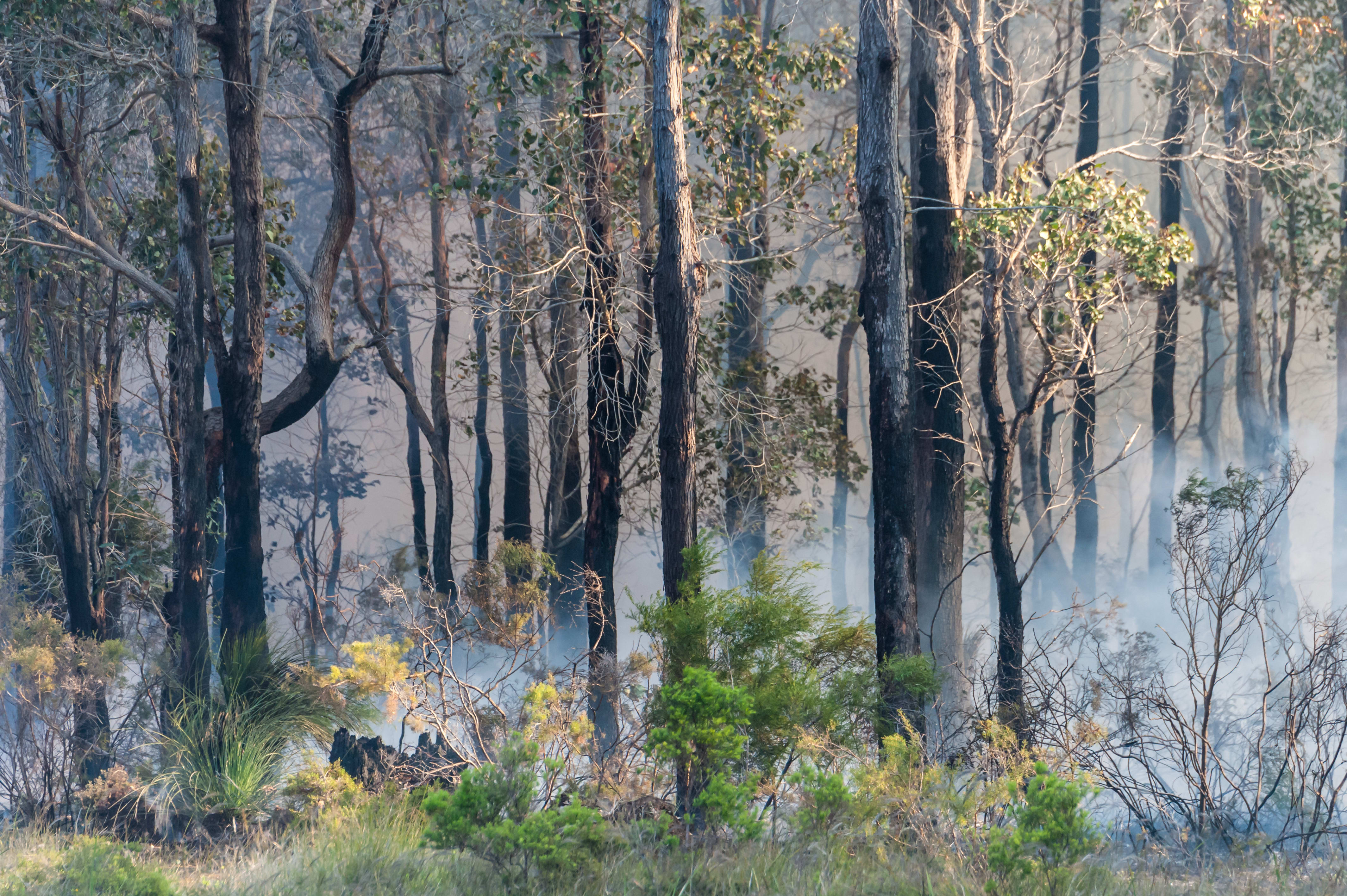
The Dreaming was central to the Narungga people’s spirituality and way of life. Stories of the dreamtime are found across the peninsula, with particular locations relating to exploits of various creator beings. Budera, Ngarna the powerful club thrower, Curlew the Owl, Bulgawan the wicked old woman and Madjitju the bat man are some examples of Narungga ancestral beings from the dreamtime.
Ceremonies were also important. These were held for various reasons such as to settle disagreements, for initiation, marriage, trade, or to share stories and experiences. Large reoccurring meetings would be held at various places such as Bubladowie Waterhole (Pupuldawi) and Weavers Lagoon.
Following European settlement, in 1867 the Narungga population were moved to a Protestant mission established at Point Pearce. A small Aboriginal community is still located here today.
European Settlement
Yorke Peninsular and its neighbouring waters – Spencer and St Vincent Gulfs – were discovered by Europeans in 1802. They were the last major features of the Australian coastline to be discovered, done so by Captain Matthew Flinders.
Flinders first reached the south-eastern tip of Eyre Peninsular in March 1802, before turning northwards and exploring the western side of Spencer Gulf. He then returned down the western side of Yorke Peninsular, charting Investigator Strait and sailing northwards along the eastern shores of St Vincint Gulf. Finally, he returned down the western side of the Gulf to complete the exploration of the Peninsula at Troubridge Point.
Flinders gave a favourable report of the peninsular, with hills covered in grass and several clumps of trees scattered over them giving the land a pleasing appearance. He named the peninsula after Charles Phillip Yorke (later Lord Hardwicke), one of the first Lords Commissioners of the Admiralty who honoured Flinders’ voyage with their patronage.
By 1846, pastoral development had begun on Yorke Peninsula, following the occupation of good grazing lands of the Northern Areas. Charles Parrington selected the first Peninsula run for Alfred Weaver who was granted an Occupation Licence for 60 sq miles ‘at the Oyster Fishery’ (Stansbury).
The first pastoral leases followed in 1851. This was a better deal for squatters, with terms of 14 years (enough to give them security) and rent set at just 10 shillings a square mile. Pastoral leases in the north and south included ‘Moorowie’, ‘Ynoo’, ‘Pareora’, ‘Yarraroo’, ‘Werocatta’ and ‘Hummocks and Barunga’ sheep stations.
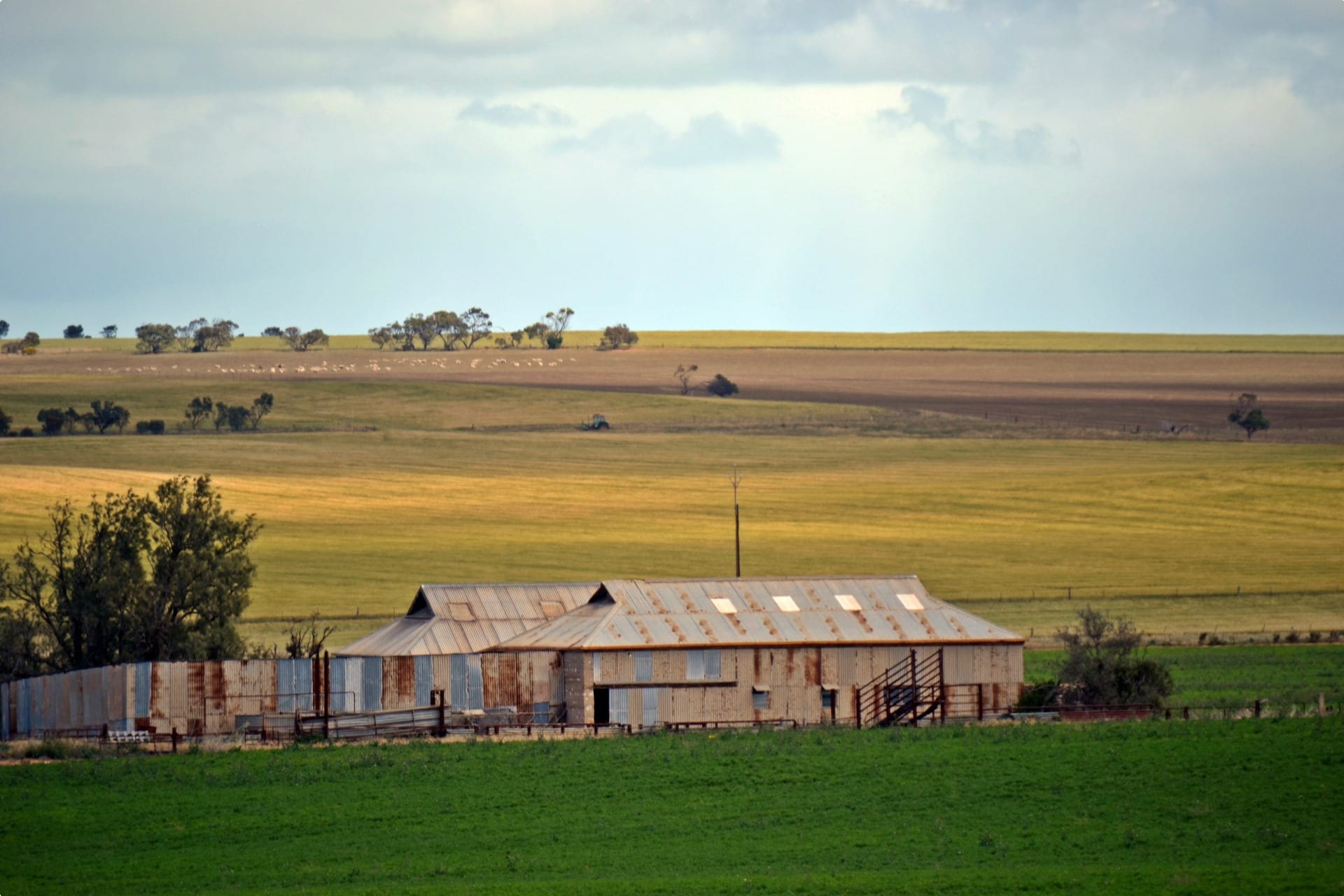
Mining History
Historically, copper has played a vital role in Yorke Peninsula’s development, with discoveries in the late 1850s and early 1860s populating the area. The first major copper discovery in the region was in December 1859, discovered by Shepard James Boor on the pastoral lease of Walter Watson Hughes and John Duncan. Hughes secured mining leases over the discovery, which was named the Wallaroo Mine, and in conjunction with Elder, Stirling and Co. (later Elder, Smith and Co.) formed the Wallaroo Mining and Smelting Company.
Fifteen months later, a second large copper find was made at Moonta by the Shepard Patrick Ryan. The discovery was made in a patch of dense scrub, in earth burrowed out of a wombat hole, again on a property of Walter Watson Hughes. Hearing of the discovery, Hughes surveyed the site and was able to secure mining leases over the area, forming the Tipara Mining Association (later renamed the Moonta Mining Company). Operations began in late 1861,
The rich Moonta orebodies, or lodes, consisted of pegmatitic and quartzose veins filling fractures within a sequence of ancient volcanic rocks known as Moonta Porphyry. Five major lodes were discovered and worked within the mine area. The principal ore minerals in the Moonta lodes were chalcopyrite and bornite (copper sulphides) in a matrix of quartz, feldspar, and biotite. Concentrates averaged 20% copper.
In the first 20 months the Moonta Mining Company produced 8,000 tons of ore averaging nearly 25% copper and paid £64,000 in dividends. In 1976, it became the first Australian mining company to pay over £1 million in dividends.
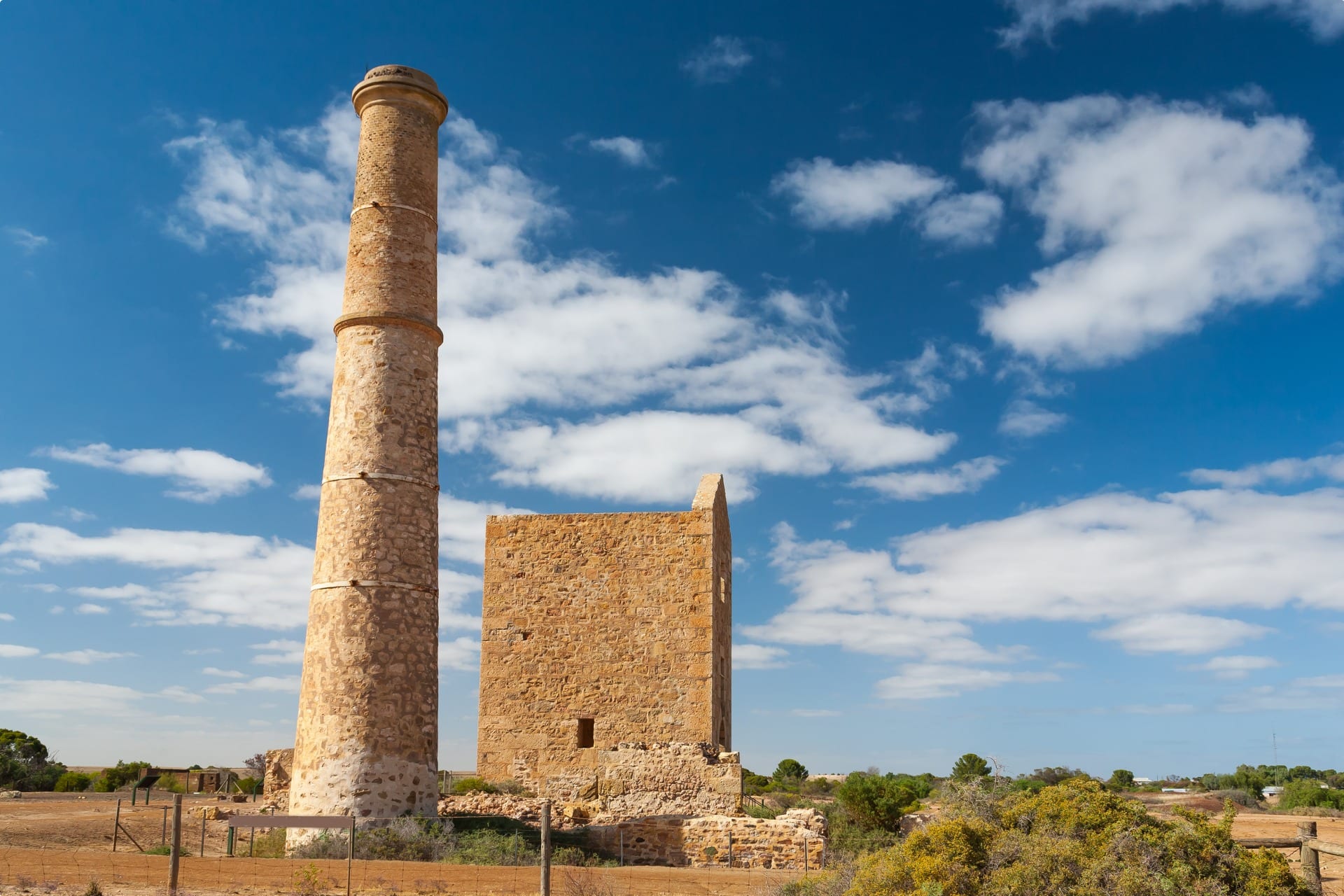
The Wallaroo Mining and Smelting Company was slower to make profits. Development costs ran up to £80,000 before the company began to pay its way. Nevertheless, by 1869, it had achieved an annual production of 26,000 tons of ore dressed. It then reached its peak between 1870 and 1875, with up to 1,000 men and boys employed.
The towns of Wallaroo (1861), Kadina (1861) and Moonta (1863) were established as a direct result of the copper mining. The three towns form a triangle, now commonly called the Copper Triangle on the Copper Coast. At the peak of mining, the Copper Coast was the most populous region in provincial South Australia. The mining district in total contained 30,000 at its peak in 1875, with Moonta’s population peaking at 12,000, making it the largest town in South Australia after only Adelaide.
In 1890, the Moonta and Wallaroo companies were amalgamated to become the largest industrial operation in South Australia. During the new company’s 33 years of existence, it employed an average of 1900 people, peaking at 2700 in 1906.
The mine enjoyed a boom period up to an including the First World War, with increased demands for copper. However, copper prices fell dramatically following the war, and the company struggled to reduce production costs, only continuing as a marginal operation. Several shortages of coal due to coal strikes in the eastern states worsened the matter, and closure soon became inevitable. In November 1923, the company went into voluntary liquidation after more than 60 years of the mines.
In total, about 3.5 million tons ore were produced from the mines, averaging 9% copper. The Moonta lodes themselves produced about 2.75 million tons of 14% ore. The mines had produced a total output of fine copper worth over £20 million.
Sporadic copper mining and explorations have continued since, with notable recent discoveries of copper and gold at Willamulka and near Ardrossan. Historically, Gypsum was also mined at Inneston and Stenhouse Bay, while One Stell’s dolomite mine at Adrossan and limestone quarries at Wardang Island and Klein’s Point have also been significant.
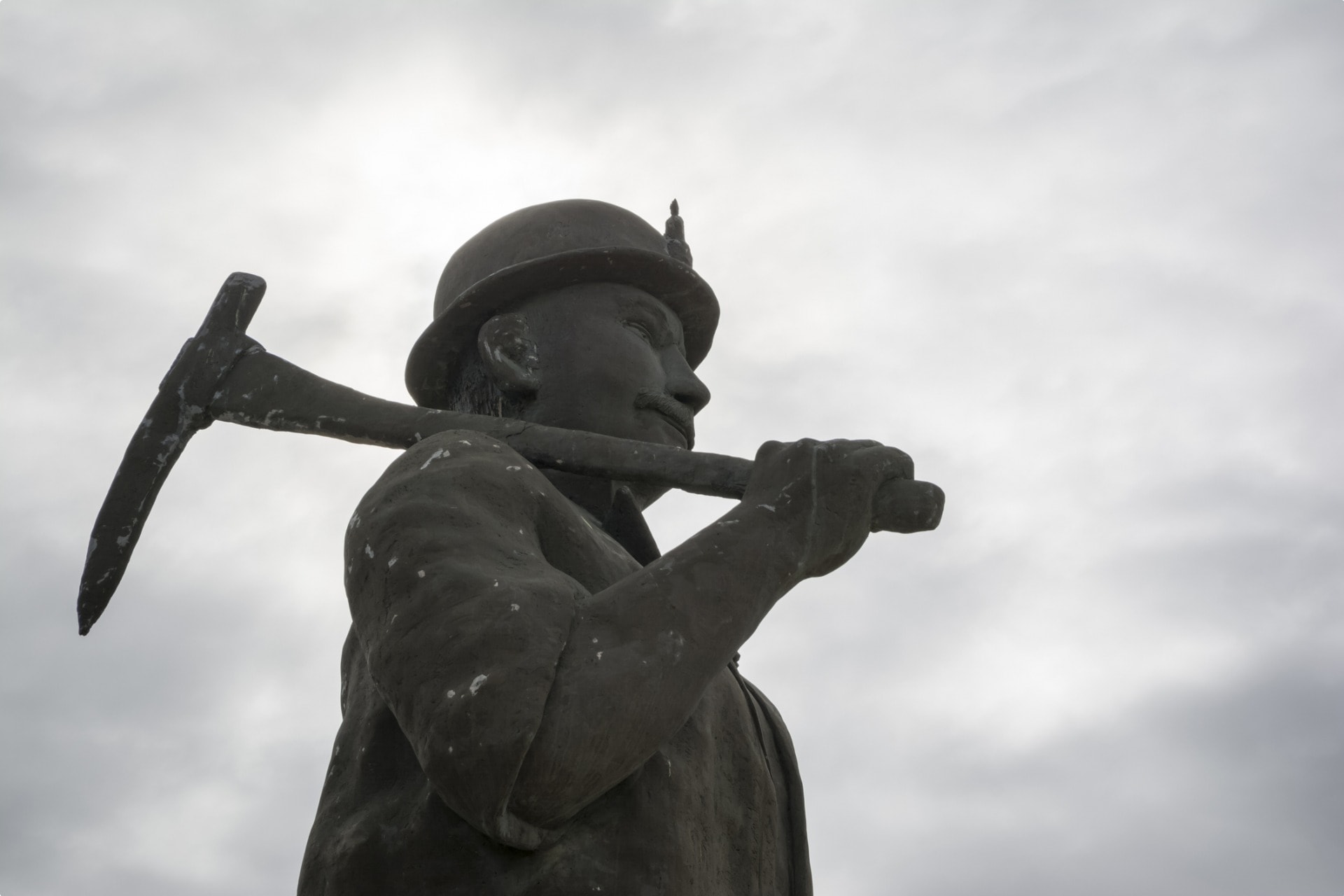
Farming History
Farming is today the chief industry in Yorke Peninsula. However, it was originally slow to take off. Only in 1860, when the first successful crop of wheat grown, was a real interest in agriculture ignited. Then with the passing of the Strangways Act early in 1869, providing for the sale of farmlands only on credit in specified areas, agricultural development was given a major boost.
A little over 300 acres of crop was reaped in 1870, with good returns, averaging a little over ten bushels to the acre. That started a rush of farmers form the older wheat-sick districts of the Adelaide Plains, the Barossa Valley, and the southern districts to try their luck on Yorke Peninsula. The agricultural settlement was a success, with crop production growing to 180,000 acres by 1884, becoming a viable business.
The success lay in the fact that Yorke Peninsula farmers had by that time learnt to work the mallee lands. Charles Mullens had discovered that by knocking down and burning the growth of the mallee trees, it was possible to work the mallee lands. Scrub rollers were also improved by William Fowler, allowing a horse team to travel over already rolled scrub.
The use of the stump jump plough was also significant, invented and then manufactured by Richard Smith and his apprentice brother, Clarance, at Ashburton in Yorke Peninsula from 1876. These tools enabled land to be brought into cultivation despite the presence of stumps and rocks, circumventing the laborious and backbreaking task of clearing mallee stumps from farmland.

Despite the initial success, however, draught and seasonal vagaries in the 1880s and ‘90s were problematic for the farmers. The general trend of yields was downwards during this time, with an occasional better harvest but never that which reached earlier levels. To make matters worse, wheat prices followed the same downward trend, reaching a low of about two shillings per bushel in the mid-1890s. At this point, yields were also at their lowest ebb.
A few farmers believed that loss of fertility was the main cause of poor yields. This led Professor Lowrie to experiment with superphosphate in fertility trials at Roseworthy College in 1890, with promising results. As such, Joe Parsons of Curramulka drilled seeds and phosphate together in the same hole in 1892, with other farmers soon following suit and experiencing successful results. By 1896 they were averaging 4.5 to 5 bushels to the acre, while the rest of the peninsula averaged only two. This was the turning point: only once in 1914 were the yields ever again below two bushels.
Agriculture was further boosted in 1901 with the introduction of Prior barley (a superior type of malting barley) at Edithburgh. This caught on in popularity, creating a movement which made Yorke Peninsula world famous as a producer of malting barley – still known today as the ‘Barley Capital of the world’. It also gave the district a fallow, wheat, and barley rotation, materially adding to the peninsula’s prosperity.
In present times, agriculture remains the stable industry of Yorke Peninsula. The general trend has been of increased production and higher yields, with only minor setbacks due to seasonal vagaries and market fluctuations. In recent years, there have also been moves to producing high quality grains and legumes. In addition, grapes are also grown at Maitland.
Other Industries
Other key industries in the economy of Yorke Peninsula include salt, fishing, and tourism.
The process of harvesting salt from the sea at Price and other sites has long provided employment and economic benefits. Salt production began at Lake Fowler in 1864, growing to an export industry of 30,000 tons by 1898. From here, it continued to increase, reaching a peak of about 57,000 tons in 1918, and the industry continued successfully till the Depression when the market declined.
Nevertheless, salt production continued at Edithburgh at about 10,000 tons a year, with most of it going to New Zealand. This was until the country commenced its own production around 1950. The Edithburgh factory finally closed down its operations in 1970. Since then, salt production by solar evaporation of sea water at Price has taken over as the peninsula’s main source. Output there averages more than 170,000 tons a year.

Fishing too is an important industry – the oldest industry in fact connected with Yorke Peninsula. Even before the first squatters arrived, Oyster Bay (now Stansbury) was established as the source of oysters for Adelaide tables. By the 1920s, Moonta Bay was to said to have the largest fishing industry in South Australia, with 370 people engaged there.
The coastal towns now all have sizeable fishing fleets, with major ports at Port Broughton, Tickera, Wallaroo, Moonta Bay, Port Victoria, Pondalowie Bay, Marion Bay and Edithburgh. Most fish caught commercially on Yorke Peninsula go straight to the Adelaide market. In order of importance, they are whiting, salmon, blue crabs, garfish, schnapper, and snook.
The peninsula has also grown to be a popular tourist attraction. Since the end of World War II, the tourist trade has boomed with active caravan parks and camping grounds, motels, and shack sites at the most popular sandy beaches. A mild climate, scenic attractions, safe sandy beaches for young children, good fishing, swimming and surfing, good sporting facilities, and accommodation amongst friendly people, all make Yorke Peninsula a pleasant and popular resort.
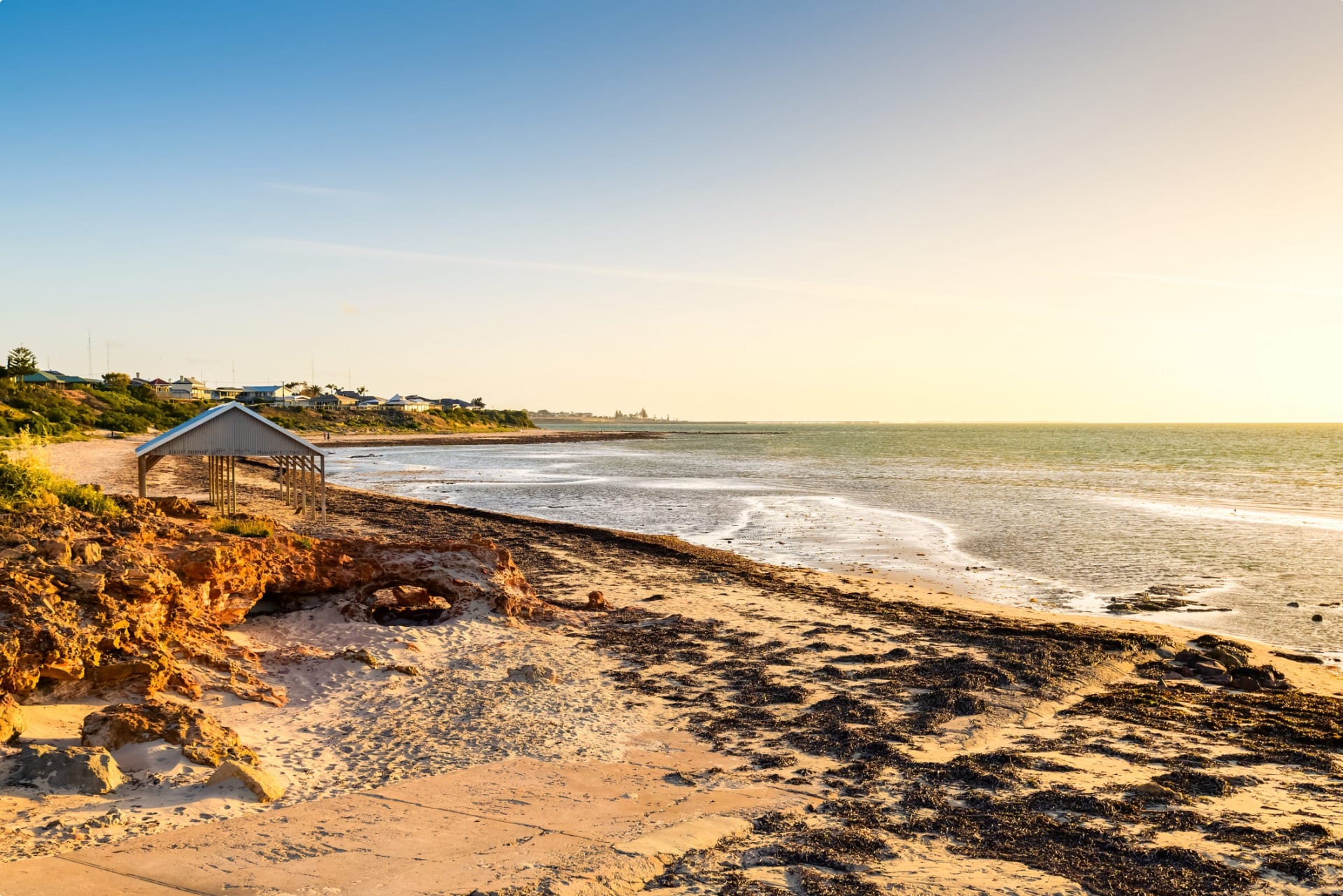
Tour of Yorke Peninsula
Join Odyssey Traveller on our 15-day Tour of Eyre & Yorke Peninsulas, and the Gawler Ranges. Beginning and ending in Adelaide, this tour of South Australia takes us on a roughly circular route to the west of the city. We first head north to Port Augusta, before exploring the Gawler Ranges, which protect the Eyre Peninsula from the arid heat of the desert to the north. This Australian tour then explores the Eyre Peninsula, a broad triangle shaped peninsula on the western side of the Spencer Gulf, protruding into the Southern Ocean. Finally, the last few days of our Australia tour explores South Australia’s Yorke Peninsula, a boot-shaped peninsula surrounded by the Spencer Gulf to the west and the Gulf St Vincent to the east.
This, like all Odyssey Traveller small group tours, is limited to 15 people.
Odyssey Traveller’s Australian tours are small group outback tours for seniors, designed for mature travellers who want an in-depth and authentic experience of their chosen destination. Since 1983, we have specialised in bringing Australian travellers to the world: now, our goal is to let you again rediscover your own country. We don’t just go from tourist stop to tourist stop, but aim to get off the beaten path, bringing to life some of the less-explored regions on your chosen Outback Australia tour. We want you to see Australia through new eyes as you travel, learning about geology, Aboriginal culture, native wildlife and local history as you pass through the ‘Wild West’ landscapes of Southern Australia .
For more information, click here, and head to this page to make a booking.
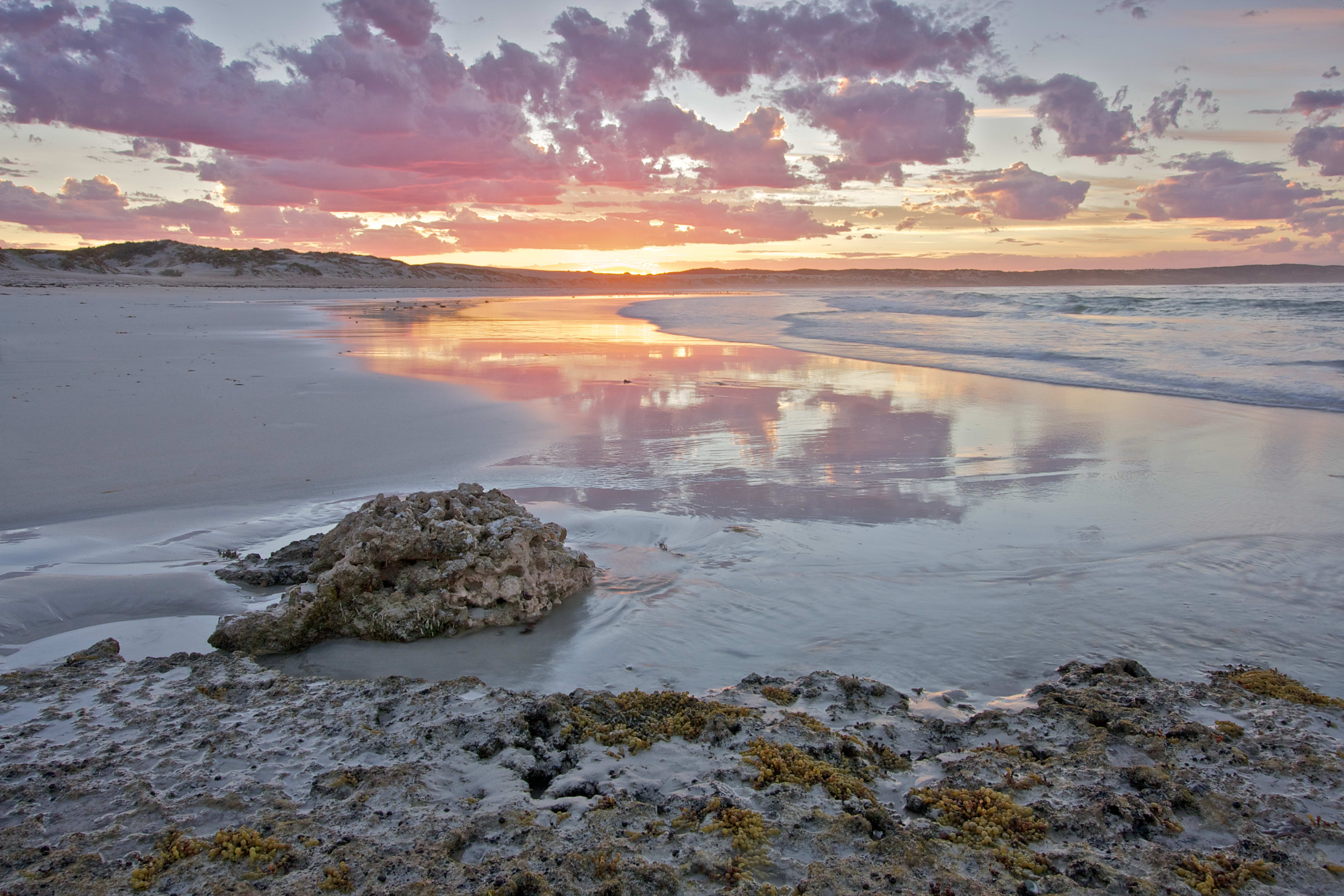
Articles about Australia published by Odyssey Traveller:
- The Kimberley: A Definitive Guide
- Uncovering the Ancient History of Aboriginal Australia
- Aboriginal Land Use in the Mallee
- Understanding Aboriginal Aquaculture
- Mallee and Mulga: Two Iconic and Typically Inland Australian Plant Communities (By Dr. Sandy Scott).
- The Australian Outback: A Definitive Guide
- William Creek, South Australia
For all the articles Odyssey Traveller has published for mature aged and senior travellers, click through on this link.
External articles to assist you on your visit to Australia:
- UNESCO: Budj Bim Cultural Landscape and Willandra Lakes Region
- Finding Mungo Man: the moment Australia’s story suddenly changed
- A 42,000-Year-Old Man Finally Goes Home
- Fish traps and stone houses: New archaeological insights into Gunditjmara use of the Budj Bim lava flow of southwest Victoria over the past 7000 years
- ‘A big jump’: People might have lived in Australia twice as long as we thought
- Mildura, Victoria
- Righting the wrongs of the Sunraysia sultana’s confusing history
- Burra, South Australia: Travel guide and things to do
Related Tours

15 days
Sep, Dec, Jan, Feb, Mar +2Eyre & Yorke Peninsulas, and the Gawler Ranges
Visiting South Australia
Small group tour South Australia. Yorke, Eyre, and Gawler Ranges, discover the local history.
From A$10,350 AUD
View Tour
days
Mar, May, Aug, Sep, Oct +2Small group tour of World Heritage sites and more in the Southern States of Australia
Visiting New South Wales, South Australia
Discover the World Heritage Sites of the southern states of Australia travelling in a small group tour. A journey of learning around the southern edges of the Murray Darling basin and up to the upper southern part of this complex river basin north of Mildura. We start and end in Adelaide, stopping in Broken Hill, Mungo National Park and other significant locations.

days
Feb, Mar, May, Jul, Sep +2Guided small group motorcycle tour of World Heritage sites in Victoria and South Australia
Visiting
Discover the World Heritage Sites of the southern states of Australia travelling in a small group tour of like minded motorcyclists. A journey of learning around the southern edges of the Murray Darling basin and up to the upper southern part of this complex river basin north of Mildura. We start and end in Adelaide, stopping in Broken Hill, Mungo National Park and other significant locations.

days
Feb, Mar, Apr, May, Jul +2Small group Motorcycle tour of South Australia
Visiting South Australia
Escorted small group tour for senior motorcycle riders of the Flinders range in South Australia from Adelaide. Learn about Coober Pedy, Wilpena pound and water system of Lake Eyre as we explore and learn also about the history of the people who explored the Flinders.
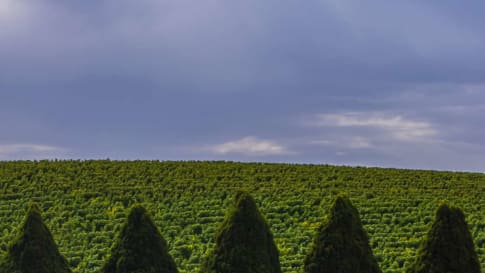
days
May, Aug, Sep, Oct, Nov +3Small group holidays to Adelaide and surrounds
Visiting South Australia
Explore and learn about on a small group tour of Adelaide city and its pastoral, cultural and historic settlement. Visit Fleurieu Peninsula, the Barossa valley, learn about William Morris and the arts and craft movement in the Art gallery and National trust houses.
Related Articles
19th Century South Australian Copper Triangle
Learn on a small group tour for couples and senior travellers for couples and solo travellers about the history of South Australian copper. Explore the Eyre peninsula, Lake Gardiner as well as Burra and the Flinders ranges.

Australia’s Ocean Frontier: Exploring the Eyre Peninsula, South Australia
Learn about the landscape and the recent settlement of this Peninsula on the South Australian coast. To see and learn more join on the this collection of Australian small group package tours for mature and senior travellers, couples or singles or join the Eyre & York peninsula program.
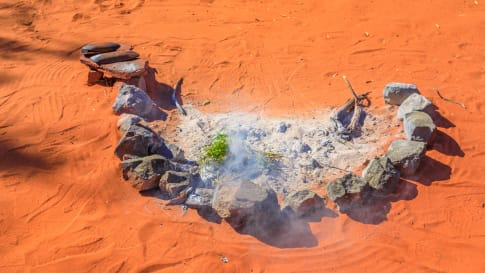
Australian Aboriginal Paths of Migration
Article for small group tours of mature or senior couples or solo travellers interested in learning more about Aboriginal history, Kinship, trading routes, songlines and ancient history.

Australian Outback Cattle King
These mature and senior programs for couples and senior travellers explore the outback Sidney Kidman sought to tame in the Channel country to the Birdsville track, Marree and Farina. Our escorted small group tours of the Australian interior explore history, cultures and landscapes that we experience as we travel from the previous time to the contemporary.

Barossa Valley and McLaren Vale Wine Regions, South Australia
This small group tour for mature and senior travellers for couples and solo travellers in Adelaide takes time to explore the two major wine-growing regions of South Australia, the Barossa Valley and the McLaren Vale.

Burra, South Australia
Once the 5th largest town in Australia, (the 1840's) this article is about the copper mining boom that was at Burra, and also the Yorke Peninsula. Mining boom also occurred at Broken hill with the wealth heading to Adelaide and Melbourne. Learn more on a small group package tour for mature and senior travellers couples or singles that includes Burra or one of the Australian tours offered.
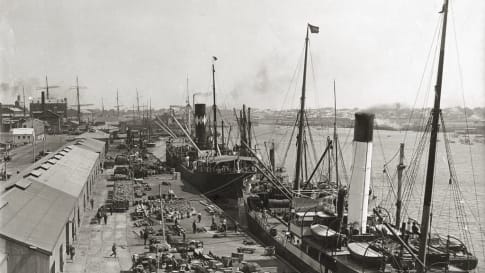
Exploring the museums of Port Adelaide, South Australia
8 days exploring Adelaide city and surrounds on small group tour for mature and senior travellers, couples and solo travellers visiting include Port Adelaide, The Barossa valley and Mclaren Vale and Fleurieu Peninsula.

History of the Fleurieu Peninsula, South Australia
Fleurieu Peninsula is part of a small group tour of Adelaide for mature and senior travellers seeking to travel as a couple or as a solo traveller. The Peninsula is historically important, click through to learn... It is also where you will find Mclaren Vale.
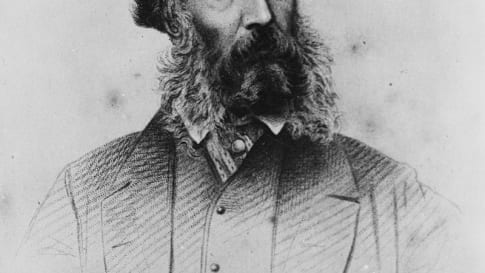
John Eyre Colonial explorer of South Australia
. Eyre explored in the 19th century the Australian bight of South Australia through to Albany as well as NSW. Eyre finished his Administrator career in Jamaica after also being in New Zealand. Articles to support small group escorted tours for senior couples and mature solo travellers of Australia

